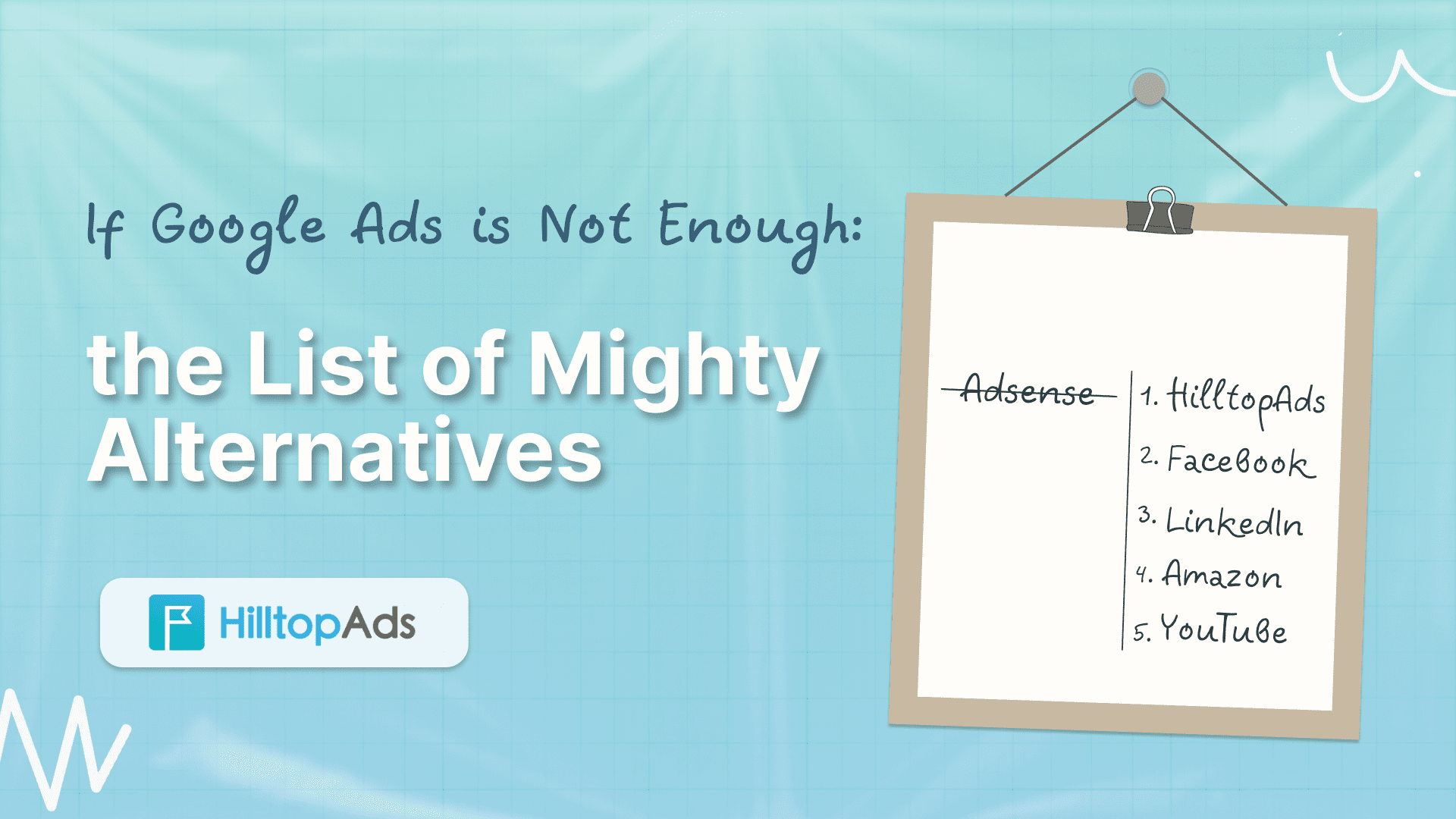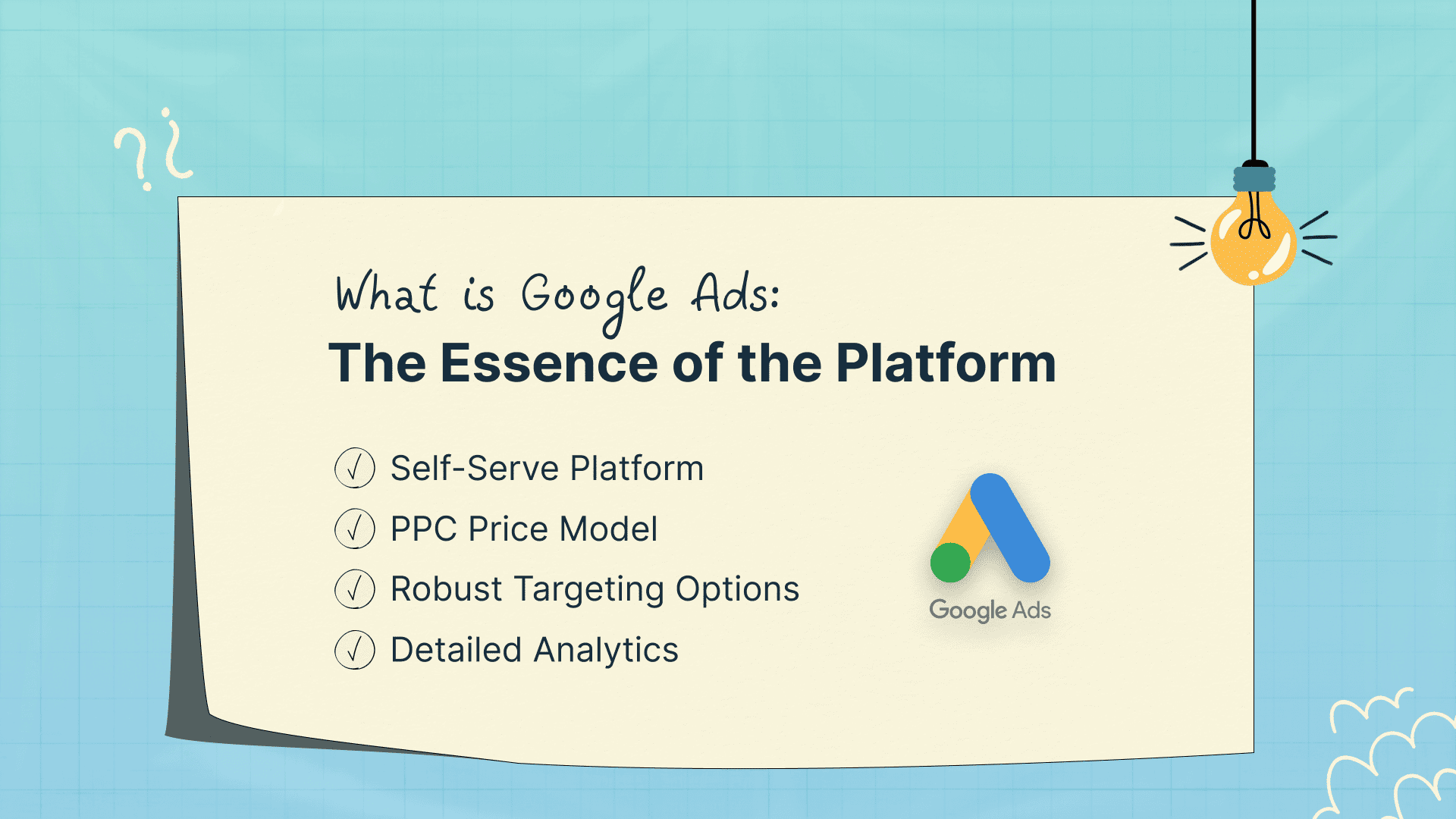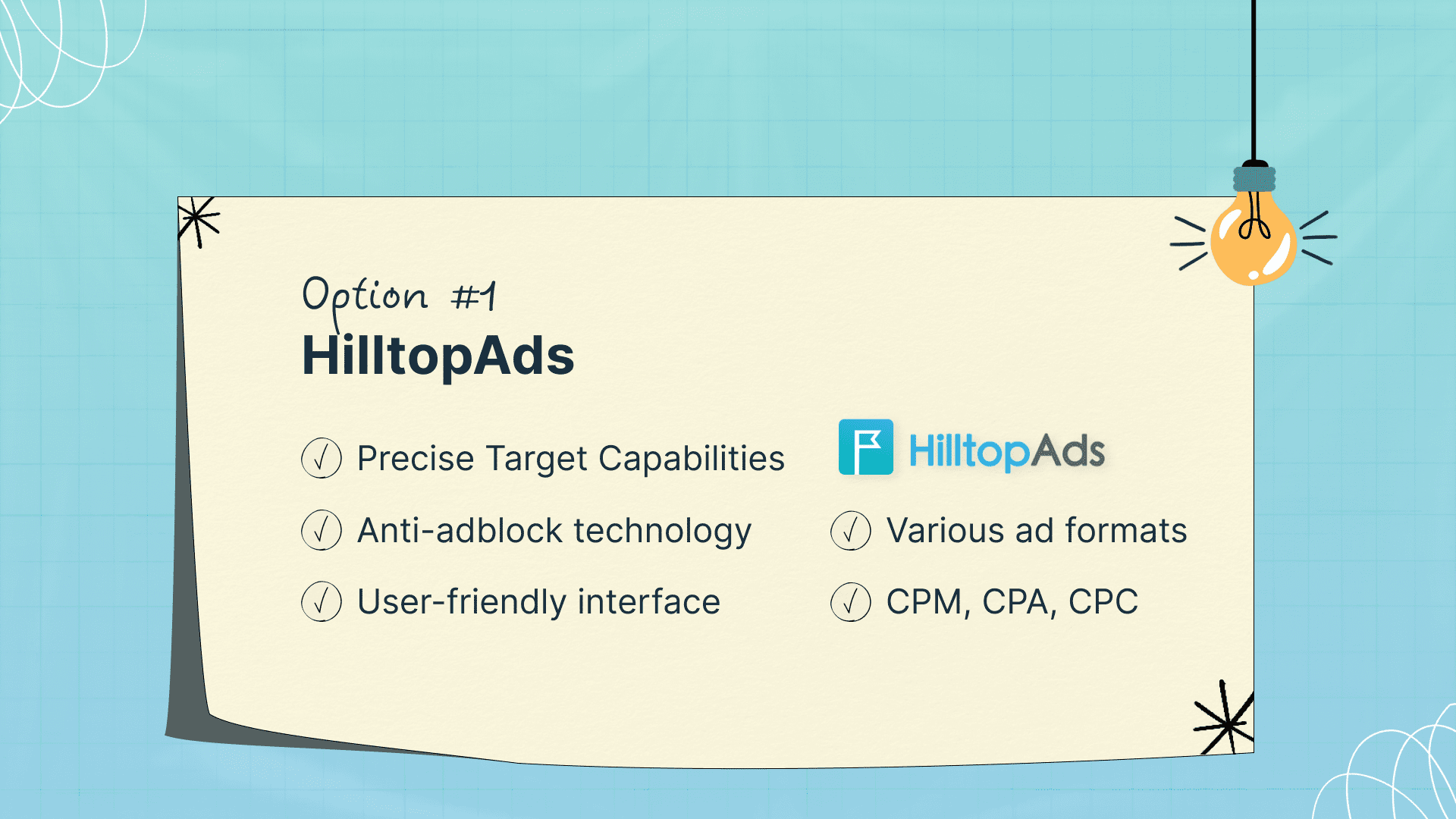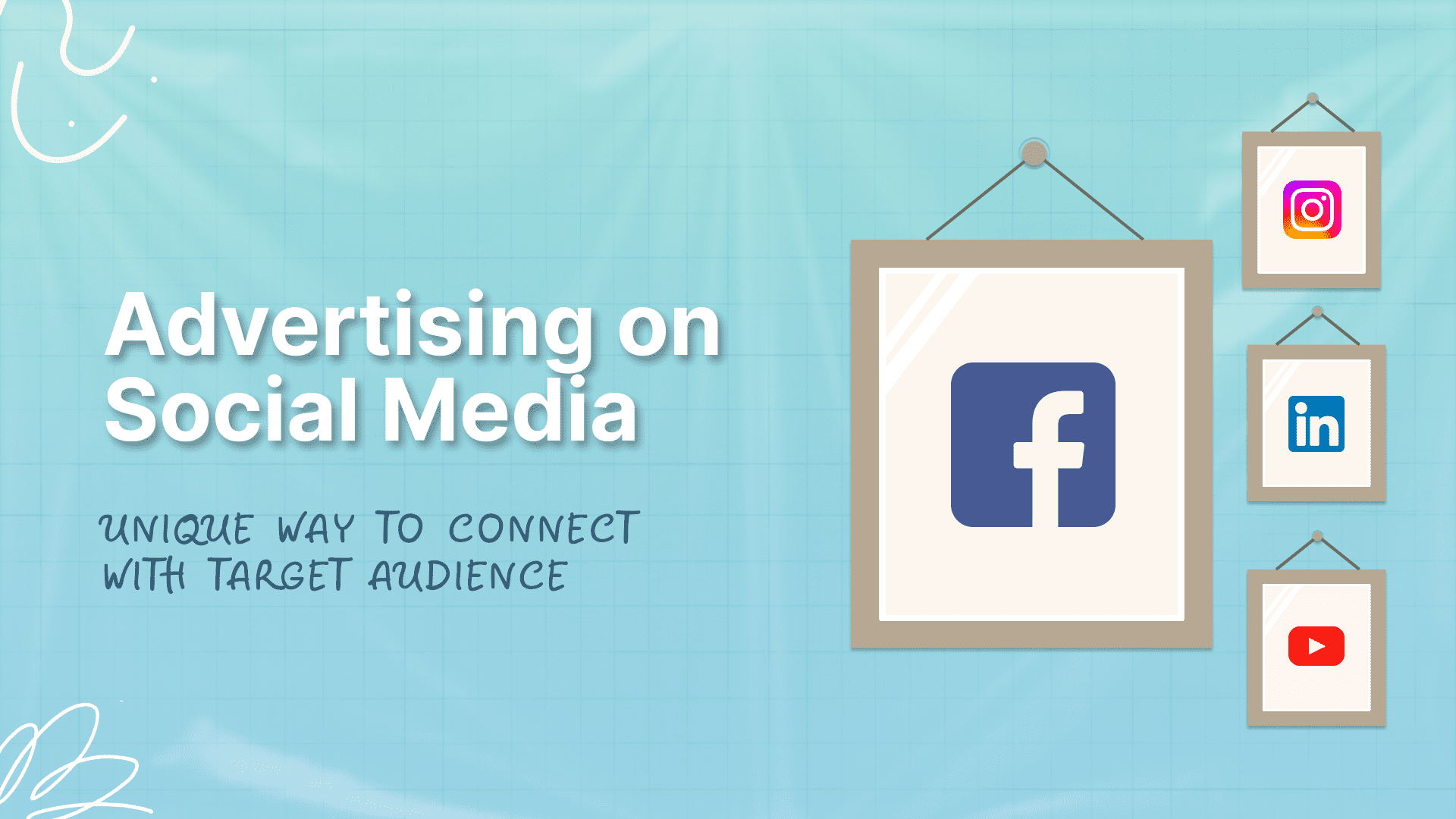If Google Ads is Not Enough: the List of Mighty Alternatives

When it comes to online advertising, Google Ads is often the first port of call for many businesses, renowned for its vast reach and sophisticated targeting capabilities. However, the digital advertising sphere is brimming with alternatives that can complement or even enhance your marketing strategy. We aim to offer a snapshot of the diverse advertising landscape, helping you make well-informed choices to meet your business goals and navigate the complexities of online marketing with confidence.
What is Google Ads: the essence of the platform

Google Ads is a leading online advertising platform that lets businesses display ads across Google's search engine and its extensive network of websites. It's a self-serve platform, meaning you can easily create, launch, and manage your ads directly, giving you complete control over your campaigns. With its pay-per-click (PPC) model, you pay only when someone clicks on your ad, making it a cost-effective strategy to drive website traffic, boost sales, or increase brand awareness.
Google Ads also offers robust targeting options to reach specific demographics, locations, and interests, along with detailed analytics to track campaign performance and optimize for better returns. In essence, Google Ads provides a versatile and accessible tool for businesses of all sizes to reach their marketing objectives efficiently.
Some worthy alternatives to Google Ads
Make sure that you analyze the market thoroughly enough before giving your choice to the service that is on everyone's lips. We agree that Google Ads is a real giant with its list of really strong features, but let's get acquainted with a few of its competitors or rather alternatives that have no less potential.
HilltopAds

HilltopAds provides various standout features for advertisers, making it a noteworthy alternative to Google Ads, especially for those aiming to navigate around ad blockers and reach a broader audience. This platform is known for its user-friendly setup and management, similar to Google Ads, but with unique features like anti-adblock technology. HilltopAds supports various ad formats across desktop and mobile, including popunders, banners, video, and in-page ads, utilizing cost-per-mille (CPM), cost-per-action (CPA), and cost-per-click (CPC) pricing models to cater to different advertising needs and budgets.
HilltopAds allows advertisers to efficiently target and engage their desired audience by exploring global reach and precise targeting capabilities: by geography, device type, operating systems, and browsers. The platform's real-time optimization and bidding for ad placements also offer opportunities for maximizing advertising ROI, making HilltopAds an attractive choice for businesses looking to diversify their digital marketing strategies beyond Google Ads.
Advertising on social media

Social media encompasses websites and applications designed for people to share content, engage in real-time communication, and participate in online communities. These platforms facilitate various forms of digital interaction, from text posts and videos to images and live streams. Examples of social media platforms include Facebook, Twitter, Instagram, LinkedIn, TikTok, YouTube, and Pinterest. Each platform serves different purposes and audiences, from professional networking and short-form video sharing to visual content discovery and beyond, shaping the way we connect, share, and discover online.
Facebook (Meta Business Suite)
- Facebook offers a strong platform for online advertisers, presenting several key advantages that make it a compelling choice for digital marketing strategies. One of its primary benefits is its vast global reach, allowing brands to connect with a large and diverse audience. Facebook's sophisticated targeting options are another significant advantage; advertisers can pinpoint their audience based on demographics, interests, behaviours, and more, ensuring that ads are shown to users most likely to be interested in their products or services.
Additionally, Facebook provides detailed analytics that helps advertisers track the performance of their campaigns in real time, allowing for adjustments and optimization to improve ROI. The platform's versatility in ad formats, from image and video ads to carousel and interactive ads, enables creative and engaging ways to showcase products and services.
These features, combined with the potential for high engagement rates and the ability to drive both brand awareness and direct response objectives, make Facebook ads a powerful tool in the arsenal of online advertisers. And more than 3 billion monthly active users worldwide noticed these advantages. You can find all the Facebook advertising features inside the Meta Business Suite.
- Instagram stands as a vibrant and indispensable advertising platform, favoured by brands aiming to connect with a vast, engaged audience of 2 billion+ users monthly through visual storytelling. Its main advantages include a highly active user base, advanced targeting options through Facebook's comprehensive advertising system, and the ability to showcase products and services via compelling imagery and videos. This platform is especially beneficial for businesses looking to enhance brand visibility and foster direct engagement with their target market.
For online advertisers vying to stand out in the competitive landscape of Instagram, here are a couple of tips to thrive: Firstly, leverage Instagram's diverse content formats, such as Stories, Reels, and IGTV, to create dynamic and engaging content that resonates with your audience. Secondly, utilize Instagram Insights and A/B testing to refine your strategies, ensuring your content and advertisements are tailored to the preferences and behaviors of your target demographic. By embracing these approaches, advertisers can significantly boost their visibility and effectiveness on Instagram.
Reddit Ads
- Reddit Ads allow advertisers to reach specific audiences through its myriad of interest-based subreddits, offering a significant advantage in targeting precision. This platform is particularly effective for engaging with niche communities, ideal for brand awareness, product launches, or feedback gathering. In addition, Reddit will work great for targeting an audience between 19 and 29 years old — this is the biggest cohort of the platform’s users. The key benefits include tailored audience targeting and diverse ad formats.
However, potential drawbacks include Reddit's community sensitivity to perceived inauthentic or intrusive advertising, requiring a careful, genuine approach. Additionally, Reddit's analytics and reporting might not be as comprehensive as those on other social platforms, posing challenges for data-driven marketing strategies.
The X Ads (ex Twitter Ads)
- In 2022, Twitter has undergone significant transformations, now it is called the X (with the change from Twitter Ads to the X Ads). One of the key benefits of the X Ads is its dynamic, real-time nature, allowing brands to engage with trends, events, and conversations as they happen. This immediacy can result in higher engagement rates compared to more traditional, search-based advertising platforms like Google Ads. Moreover, X's unique social environment fosters a sense of community and direct interaction, enabling advertisers to build closer relationships with their audience.
For businesses looking to amplify their presence in a conversation-driven platform and tap into immediate, culturally relevant moments, the X Ads presents a compelling alternative to Google Ads. It offers a blend of immediacy, relevance, and engagement that can be particularly effective for certain types of campaigns and objectives with the 300+ million global users' monthly audience.
Video advertising segment
- Video advertising is a marketing strategy that involves creating and distributing engaging video content to promote products, services, or brands across various platforms such as television, social media, and websites. The key factor to success in this field is creating compelling, relevant, and emotionally resonant content. It should capture the audience's attention, convey a clear message, and encourage viewers to take target action (make a purchase or share the video with others).
YouTube
- YouTube, owned by Google since its acquisition in 2006, is a powerhouse for online advertising. By tapping into Google's vast data and targeting capabilities, advertisers can pinpoint their ideal audiences with incredible accuracy. This platform is effective because it allows for creative and engaging video ads that reach over 2.7 billion users monthly. With a variety of ad formats, from skippable videos to display ads, marketers can capture attention in multiple ways.
Plus, YouTube's detailed analytics help fine-tune strategies for better results. The blend of Google's targeting precision and YouTube's engaging content and wide reach makes it a top choice for advertisers looking to make an impact online.
TikTok
- TikTok ads offer a dynamic and engaging platform for online advertisers looking to tap into a young and vibrant audience. One of the main advantages of advertising on TikTok is its vast, global user base, which allows for a wide reach and the ability to target specific demographics, interests, and behaviors with precision. The platform's unique algorithm promotes content virality, giving ads the potential to achieve significant organic reach beyond their initial target audience.
Key factors for success on TikTok include creating authentic, creative, and entertaining content that resonates with the platform's user base. Advertisers should focus on leveraging TikTok's native features, such as challenges, hashtags, and trending music, to encourage user interaction and engagement.
Additionally, working with TikTok influencers can amplify reach and lend credibility to advertising campaigns. Ultimately, success on TikTok requires advertisers to blend creativity with strategic targeting to capture the attention of users in a way that feels genuine and engaging.
Other universal alternatives to Google Ads
In this block, let's have a look at three big advertising platforms that go beyond social media ads or video ads.
Amazon
Amazon is a perfect solution for businesses looking to diversify their online advertising strategy. With its vast e-commerce platform, Amazon offers a unique opportunity to reach consumers who are already in a shopping mindset, potentially leading to higher conversion rates compared to traditional search advertising. Key features of Amazon's advertising platform include Sponsored Products, which allow advertisers to promote individual listings directly within search results and product pages. One more useful attribute is Amazon DSP (Demand-Side Platform), enabling advertisers to reach audiences both on and off Amazon with display and video ads.
Furthermore, Amazon's rich shopper data provides advertisers with advanced targeting options, enabling them to reach specific demographics, interests, and shopping behaviours. This level of specificity, combined with Amazon's massive user base, makes it an attractive option for brands looking to maximize the effectiveness of their online advertising campaigns.
LinkedIn advertising is a great alternative to Google ads, particularly for businesses targeting professionals and decision-makers in specific industries. Unlike Google's broad approach, LinkedIn offers precise targeting based on job titles, industry sectors, professional interests, and more. This allows advertisers to reach their ideal audience with remarkable accuracy. Key features of advertising through LinkedIn include:
- Sponsored Content for promoting company updates and thought leadership articles directly in the news feed;
- Message Ads that deliver personalized messages to the LinkedIn inboxes of targeted professionals;
- Dynamic Ads that automatically personalize ad content for each viewer.
This level of customization and direct access to a professional audience makes LinkedIn a powerful tool in the arsenal of online advertising. It presents a unique advantage for B2B marketers and recruiters aiming to connect with a highly engaged and niche audience.
Microsoft Ads (ex Bing Ads)
Microsoft Advertising, formerly known as Bing Ads, provides a significant user base, particularly among certain demographics that prefer Bing as their primary search engine and offers a unique opportunity to reach audiences that may be less saturated by competitors' ads. Winning characteristics of this platform include seamless integration with LinkedIn, allowing advertisers to target based on company, job function, and industry, providing a level of specificity not available on many other platforms.
Additionally, Microsoft Advertising tends to have a lower CPC due to less competition, which can result in a higher ROI for advertisers. The platform also offers advanced analytics and reporting tools, enabling businesses to track ad performance, user engagement, and other critical metrics in real-time. By leveraging Microsoft Advertising, companies can expand their online presence, engage with a broader audience, and optimize their advertising spending more effectively.
Final thoughts about Google Ads alternatives

As we wrap up our exploration of the digital advertising landscape, it's clear that Google Ads stands tall as a market leader, offering a vast network and progressive tools that cater to businesses of all sizes. However, the realm of online advertising is rich with diversity, and competitors like HilltopAds are making impressive strides, bringing to the table a host of advantages that appeal to advertisers seeking specific benefits.
Speaking about mentioned above, HilltopAds distinguishes itself by focusing on non-intrusive ad formats, strong anti-adblocker technology, and a commitment to ensuring high-quality traffic. This makes it an attractive option for publishers and advertisers looking for tailored solutions and potentially higher engagement rates without the drawbacks of ad blocking. It's a testament to the vibrant competition in the industry, encouraging innovation and offering advertisers a wide array of choices to fit their unique needs.
In conclusion, while Google Ads may be the Goliath in the room, the presence of agile and innovative platforms like HilltopAds reminds us that the digital advertising ecosystem thrives on diversity. These competitors not only challenge the status quo but also push the entire industry forward, benefiting advertisers and audiences alike with more options, better targeting, and creative advertising solutions. Whether you're a small business looking to dip your toes into digital advertising or a large corporation aiming to diversify your advertising strategies, the landscape is rich with opportunities to connect with your audience in meaningful ways.
FAQs about Google Ads alternatives
How to choose a strong alternative to Google Ads?
Selecting the right alternative to Google Ads involves assessing your advertising goals, understanding your target audience, and considering your budget. Explore platforms like Facebook Ads for demographic targeting, Bing Ads to reach a different search engine audience, LinkedIn Ads for B2B marketing, Twitter Ads for timely engagement, and Amazon Advertising for e-commerce visibility. Evaluate each platform's strengths and supported ad formats to match your campaign's needs.
Which social media platform will make a worthy alternative to Google Ads?
Several social media platforms offer viable alternatives to Google Ads, each catering to unique marketing needs and audiences. Facebook Ads provides access to a broad user base with detailed targeting options, while Instagram Ads are perfect for reaching a younger demographic through visually engaging content. LinkedIn Ads specialize in B2B marketing, allowing for precise targeting based on professional criteria. Twitter Ads offer real-time engagement possibilities, targeting users based on interests and trending topics. TikTok Ads tap into a younger, highly engaged audience, making it suitable for trend-driven and creative campaigns.
Which platform is better: Google Ads or Facebook Ads?
Google Ads and Facebook Ads serve different purposes and are best suited for different advertising objectives. Google Ads operates primarily through search engine advertising, making it ideal for targeting users with intent to purchase, offering businesses a way to appear directly in front of users as they search for specific products or services.
On the other hand, Facebook Ads leverage the social platform's extensive user data to enable highly targeted advertising based on demographics, interests, and behaviour. This platform is effective for building brand awareness and engaging with users on a more personal level.
